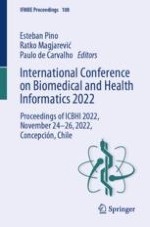This book covers current advances and challenges in biomedical and health informatics. It reports on the latest technologies and on strategies and concepts to implement them for medicine, health and education. Contributions deals with a range of topics, including artificial intelligence and precision medicine, e-health and training, medical devices and wearables, and medical imaging. Gathering the proceedings of the Fifth International Conference on Biomedical and Health Informatics (ICBHI 2022), held on November 24–26, 2022, in Concepción, Chile, this books provides academics and professionals with a timely snapshot of the digital transformation in the field of medicine.
